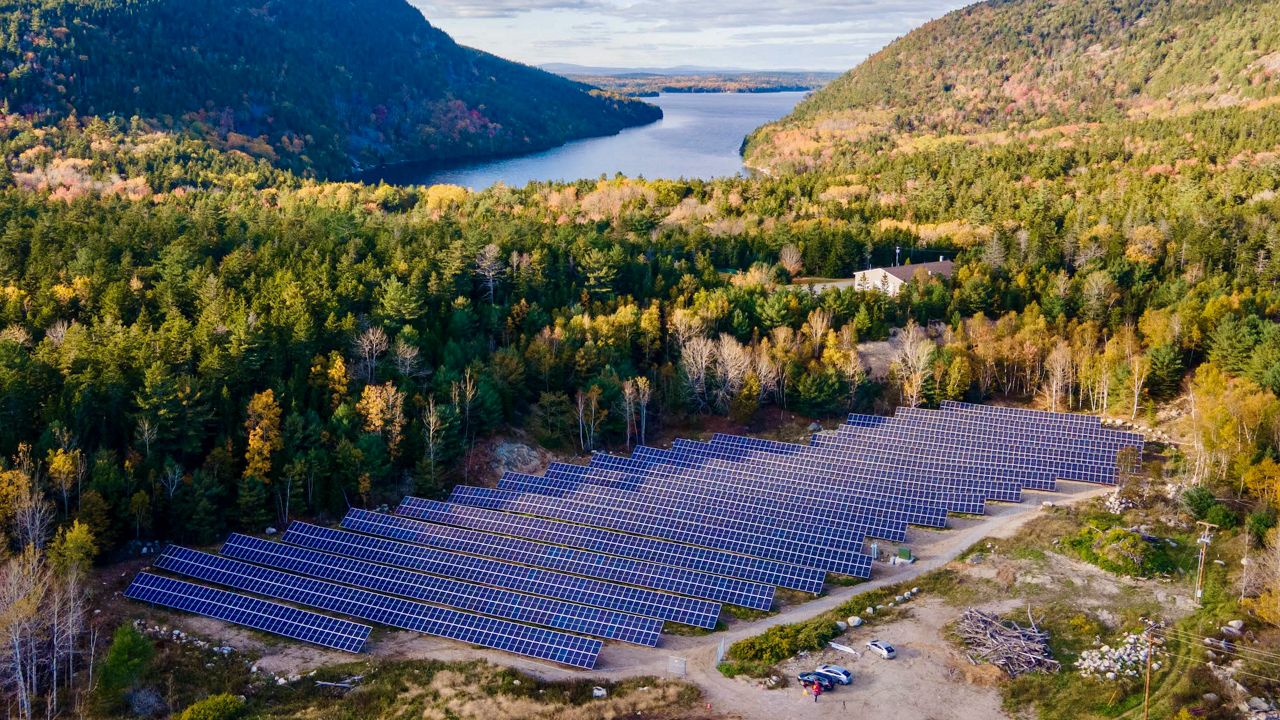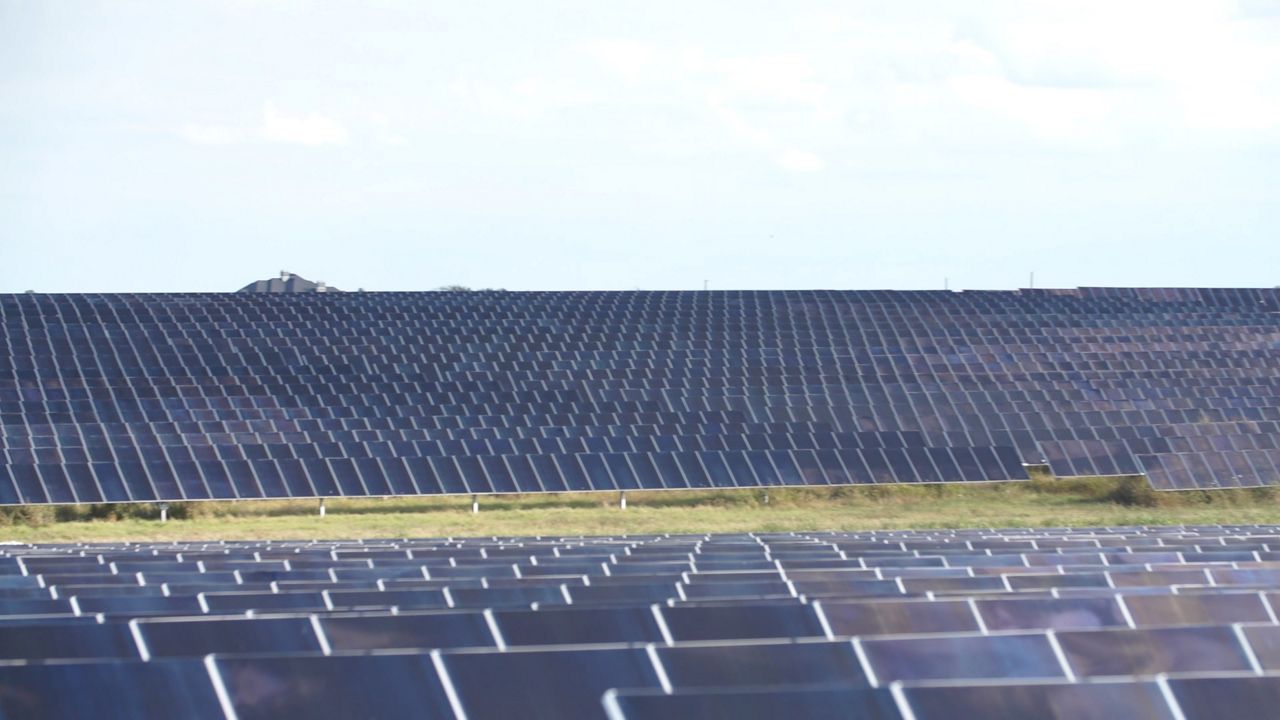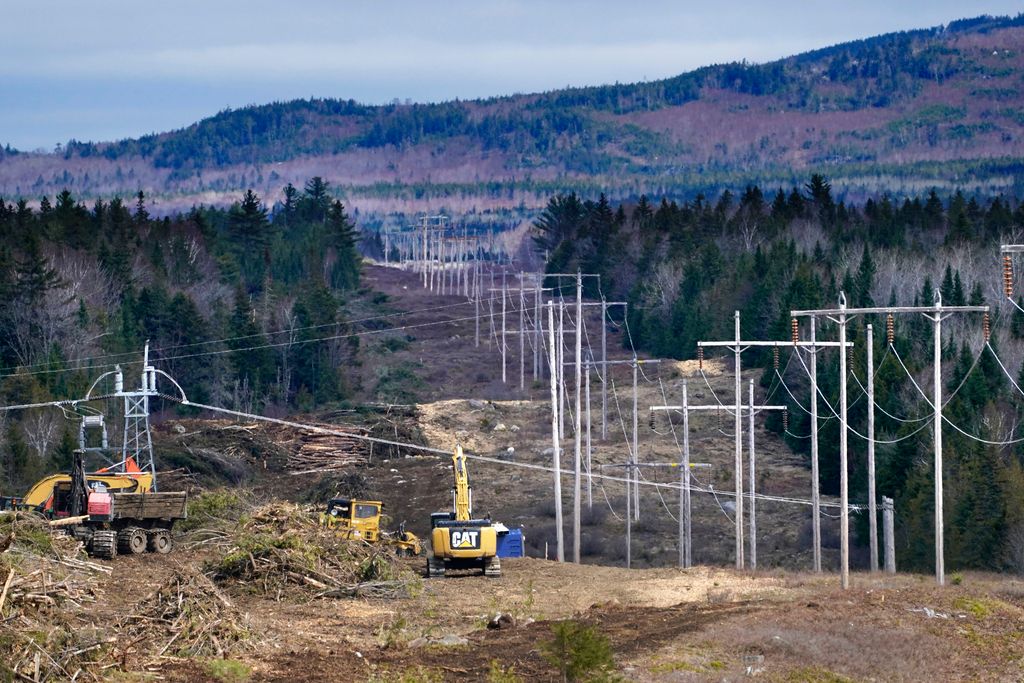Clean energy advocates are weighing the long-term implications of Maine’s vote Tuesday in favor of retroactively banning Central Maine Power’s controversial transmission corridor.
The ballot question’s success came on a roughly 60% margin after the most expensive referendum campaign in state history. It's already teed up another high-stakes legal battle over the future of the power line, which aims to bring an influx of Canadian hydropower onto the New England grid to help meet the climate change goals of Massachusetts.
And amid a push to build renewable energy in New England, it also changes the landscape for similar projects going forward — barring them altogether from Maine’s Upper Kennebec Region, and requiring majority legislative approval for other such projects elsewhere in Maine.
Pete Didisheim, the advocacy director of leading corridor opponent Natural Resources Council of Maine, said this change is a surmountable and necessary hurdle for “well-planned” large power lines, and that his group supports “building out transmission for the grid of the future.”
“Now that we’ve had this precedent of CMP trying to just plop it into the middle of forestlands, we think it helps to send the right message to developers that they need to come up with a plan that follows best practices,” he said.
Didisheim said those best practices, which he argues CMP did not follow, include considering all possible alternatives, co-locating “to the absolute extent possible” with existing transmission corridors, roads or railways, and not fragmenting large, uninterrupted tracts of forestland.
The language of the law the referendum is supposed to enact, in the coming weeks, also includes exceptions that Didisheim argues should make it easier for certain important projects to pass muster.
The new statute defines a “high-impact electric transmission line” as more than 50 miles long and transmitting direct current electricity at 345 kilovolts or more. The statute does not apply to lines designated as “reliability” projects or to “generator interconnection” facilities, which Didisheim said would include things like “lead lines” to bring offshore wind power ashore.
Still, some see the referendum as a potential watershed change for how Maine and New England modernize their shared grid in order to tackle climate change.
University of Maine political science professor Amy Fried said the referendum vote may push Maine to focus on smaller-scale energy infrastructure to complement wind and solar, which she thinks has more public support than large-scale transmission.
“This will probably dissuade those seeking big transmission line projects in Maine, with efforts to decarbonize focusing on local and intra-state generation and distribution, both on land and sea,” Fried said.
Consultant Gordon Weil, Maine’s first public advocate and a longtime leader in state and regional energy politics, said Maine should be able to substantially lower its greenhouse gas emissions through “lesser means” than projects like the CMP corridor.
He argued Maine’s cleaner future lies in “localized generation,” where people get their electricity from nearby wind, solar and hydropower: “All of which would be environmentally beneficial to do — not perfect, there’s a cost with everything — but would be more beneficial to do than building high-voltage transmission lines to bring very distant sources of power to the market,” he said.
Rob Gramlich, who heads the transmission advocacy group Americans for a Clean Energy Grid, disagrees. He said even with more local distribution of renewable energy, states like Maine will still need to build larger-scale lines to move excess power around at different times.
“Both wind and solar have a lot of output diversity across geographic areas — so if the wind isn’t blowing in one place, it likely is in another place, and if it’s cloudy in one place, it may be sunny somewhere else, and you have solar in different time zones,” Gramlich said. “So you have a lot of reasons why ... you need to share power across long distances in order to have a reliable grid with a lot of renewable energy on it.”
He agreed with Didisheim’s characterization of best practices for building those lines: routing through existing corridors, and facilitating a more public planning process with neighbors. But Gramlich said Maine’s vote sets a “terrible example” that he hopes no other states follow.
“We’re never going to get a decarbonized clean grid if more states pass what Maine just passed,” he said. “We would basically be resigned to fossil generation forever, and of course, that’s what the fossil companies who were behind this initiative had in mind.”
Environmental groups like NRCM were joined in supporting the referendum by companies that own fossil fuel and nuclear plants in New England, such as Florida-based NextEra.
Peter Rothstein, the head of the Northeast Clean Energy Council, said in a statement that the Maine vote reveals “an important challenge in our march toward clean energy."
“If critical infrastructure doesn't get built to bring grid-scale clean resources from the source to the users, then the whole clean energy transition will be disrupted,” Rothstein said. “The vote emphasizes the need to bring everyone to the table to develop a regional strategy to invest in our grid infrastructure modernization and to allow us to reach our climate commitments.”
In the near term, Hydro-Quebec appears determined to push ahead with the CMP corridor. Spokeswoman Lynn St. Laurent said “plan B” after the referendum is to seek legal recourse. CMP parent company Avangrid filed a lawsuit less than a day after the vote, arguing the referendum is unconstitutional.
Speaking to reporters at the global climate summit in Scotland soon after the vote, Quebec energy minister Jonathan Julien said the province’s government believes the corridor is on firm legal footing.
“The project must go ahead because we have all the authorizations to proceed,” Julien said, according to the Montreal Gazette. “We are not going to demobilize our resources. We are on the ground and working.”
CMP has been able to continue clearing trees for the corridor on most of the line’s route even as other legal and regulatory challenges proceed. NRCM, in a statement Tuesday night, said they should immediately stop work or state regulators should step in to make them do so. So far, construction has continued.
Didisheim, with NRCM, said he believes the onus of enforcing the referendum’s immediate impacts now falls on the state Department of Environmental Protection, which has a decision pending on whether to suspend the corridor’s lease to a mile of public lands near West Forks.
Governor Janet Mills, in a statement, said she understands Maine voters' frustration with CMP but worries that scuttling the project will mean Maine loses "a significant opportunity to advance the clean energy goals that are vital to combating climate change."
Mills said she expects the courts will soon clarify the referendum's implications.
“In the meantime, my Administration will continue to pursue all opportunities to advance clean energy infrastructure in Maine to lower the cost of energy, reduce our reliance on out-of-state fossil fuels, protect our environment, and strengthen our economy,” Mills said.
This story was updated Thursday to note Avangrid's lawsuit over the referendum.









